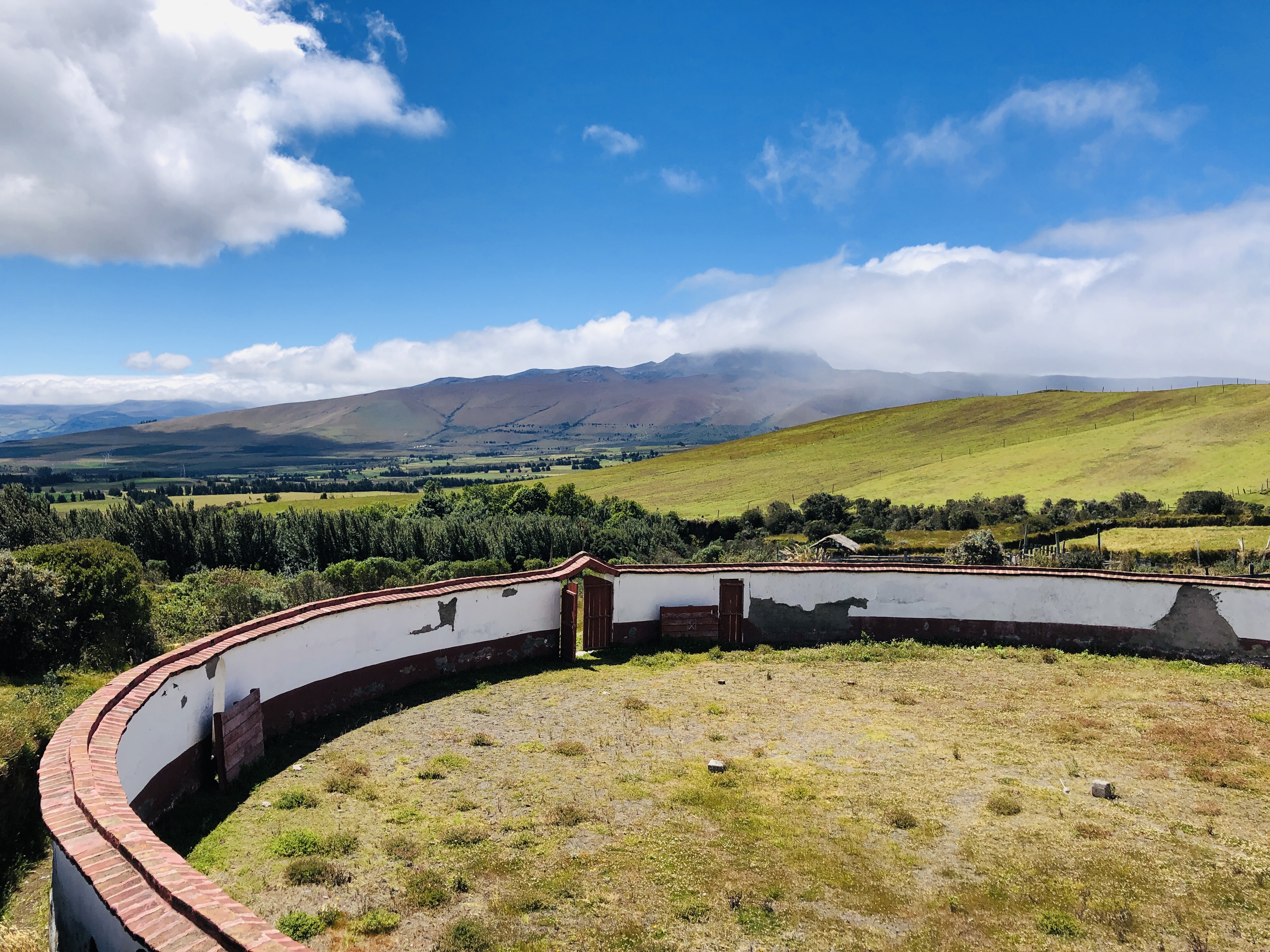The Art of Fernando Botero by Tim Ghazzawi:
Gabriel García Márquez is Colombia’s most acclaimed artist. The Nobel Prize-winning author has had his writing translated into over 30 languages and, despite his death 5 years ago, maintains an immense readership around the world. I recently bought myself a copy of 100 Years of Solitude. I’ve read only three chapters and already feel enveloped by its magic. There is another artist, though, whose works I have found far more recognizable, if not inescapable, than Márquez’s as I’ve traveled across Colombia. He is Fernando Botero, a painter and sculptor who, simply put, is best known for painting and sculpting fat things. Or perhaps it is better said that he is best known for painting and sculpting things fat.
Everyday men, women, cars, buildings, bicycles, guitars, and other ordinary objects serve as Botero’s primary subjects. What makes his work so unique is how comically large he represents these objects in relation to both their real-life counterparts and the other objects in the paintings. Take for example these bananas and oranges and pay close attention not just to the fruit but also to the silverware and table in each:
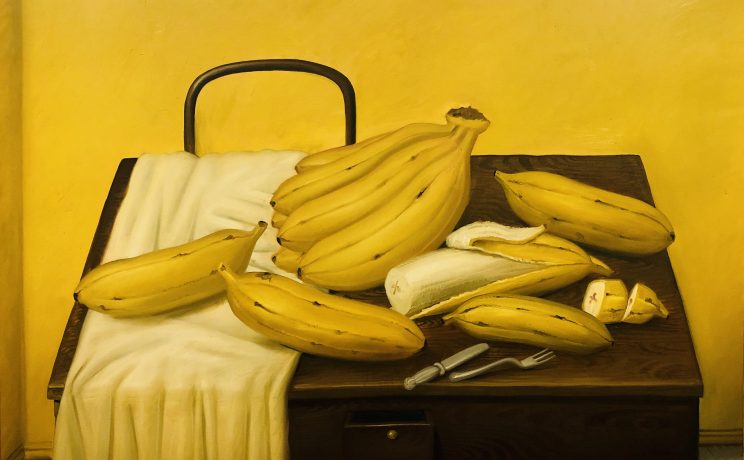
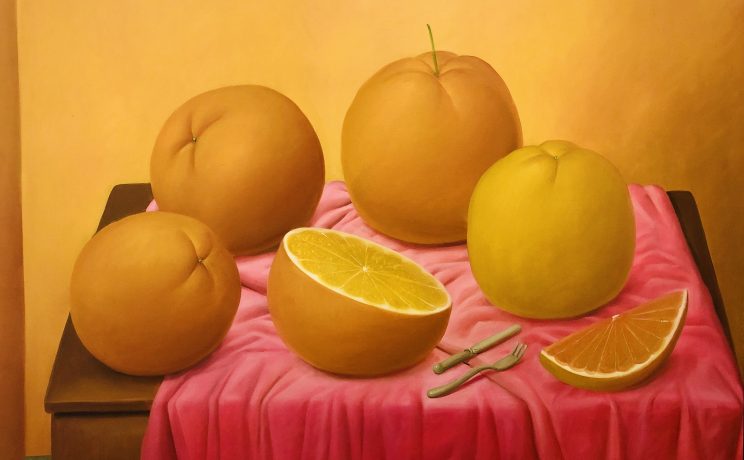
My favorite Botero paintings and sculptures feature people, particularly people of a certain nobility and notoriety. They are religious (Mother Superior), political (The Presidential Family), pop-culture famous (Mona Lisa), and infamous (Pablo Escobar). And, like his bananas and oranges, they are all painted fat. Inflatable dolls, their chubby chubby cheeks sink into plump necks which connect to busty and blocky bodies. Their eyes, noses, and mouths are laughably small for the size of their faces. Their fingers are pudgy but also short in length. Here are a few:
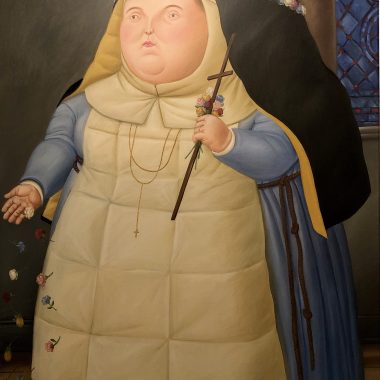
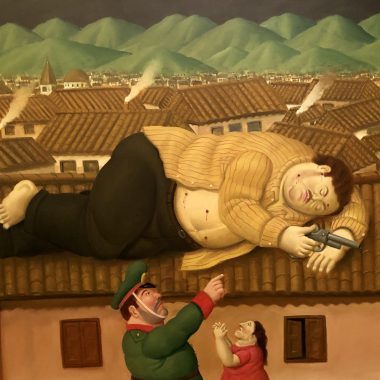
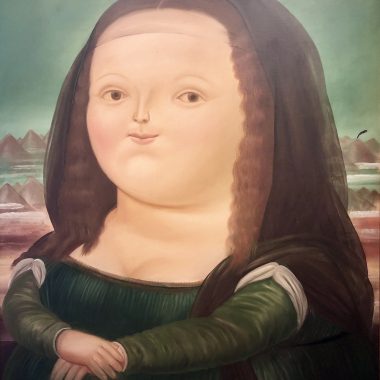
Botero’s genius, it seems to me, lies in the balance he strikes between mocking and humanizing his subjects. They are funny-looking but likeable. Outlandish yet familiar. Da Vinci’s Mona Lisa might be regal but Botero’s is far more endearing to her audience. His works are so endearing, in fact, that Botero’s likeability in Colombia appears universal. His sculptures are featured in the center of many of the country’s plazas and parks, some of which are also named after him. The Botero Museum is perhaps Colombia’s best and features his paintings rightfully alongside the works of other modern masters like Picasso and Dali.
Sadly one piece of Botero’s collection is intimately connected to Colombia’s violent political history. On the night of June 10, 1995, a bomb exploded during a music festival being held in San Antonio Plaza in downtown Medellín. The source of the bomb? A Botero bird sculpture which had been rigged with explosives. 30 people died and hundreds more were injured. Multiple guerrilla groups and drug cartels took credit for the attack. No one was ever found guilty of the crime. Botero refused to remove the original sculpture, however, despite it being ravaged, and instead sculpted an identical bird to be placed in the same plaza. Today, the sculptures stand side by side, representative of Medellín’s dark past and bright future.
I’ve been told that touching the particularly “sensitive” areas of Botero’s nude sculptures will bring me good luck. The penis of the soldier in Medellín and the left breast of the reclining woman in Cartagena are two examples of body parts with these supposed powers. I’m not sure how this folklore started. Part of me thinks it’s a Colombian gag to make tourists look foolish in public. Even more of me thinks Botero is in on the whole thing. He does have an uncanny way of making ordinary people look harmlessly silly.
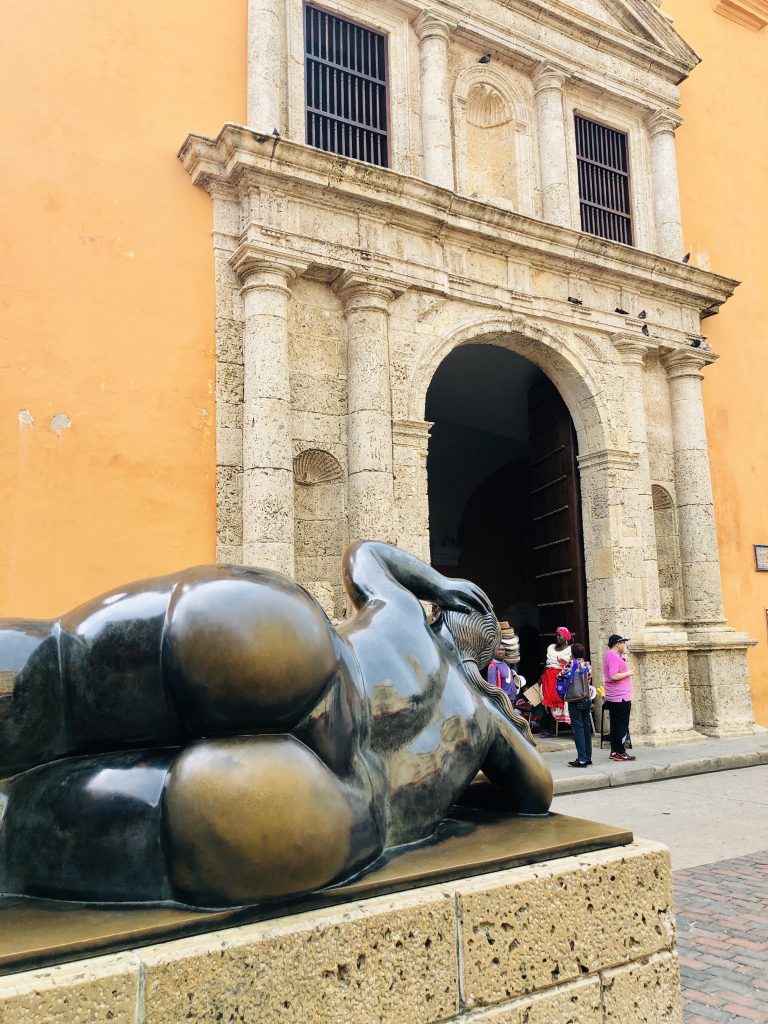
THE FACTS
I spent a month in Colombia and observed Fernando Botero’s artwork in many of its major cities including Bogotá, Cartagena, and Medellín. I highlight my specific experience in Bogotá at the Botero Museum, below, but I recommend anyone visiting Colombia to explore as much of Botero’s work throughout as much of the country as possible.
My favorite spot for nightly live music and Colombian-Italian fusion fare.
Cl. 12b #Carrera 1A
Bogotá, Colombia
I also enjoyed Bogotá’s nightlife at the Bogotá Beer Company (standard bar with Colombian brewed beer) and Teatron (pandemonium-filled 15-story dance club)
- Entrance is free to the Botero Museum, which also happens to be attached to the Casa de Moneda y Museo de Arte Miguel Urrutia.
- More generally, Bogotá has the unfair reputation of being a city with nothing to do. While there aren’t excess sites to see, I quite liked its urban-grunge vibe and energy. La Candelaria is the heart of Bogotá’s historic center and certainly exploring, however, I wish could have seen more of what other neighborhoods in the city have to offer.
If you enjoyed reading about the artwork of Fernando Botero, you might also check out the following stories related to my other Colombian adventures:
- “Missing Chickens: A Weekend in Punta Gallinas, Colombia” by Tim Ghazzawi
- “Things Not Exploding: A Game of Tejo in Salento, Colombia” by Tim Ghazzawi


